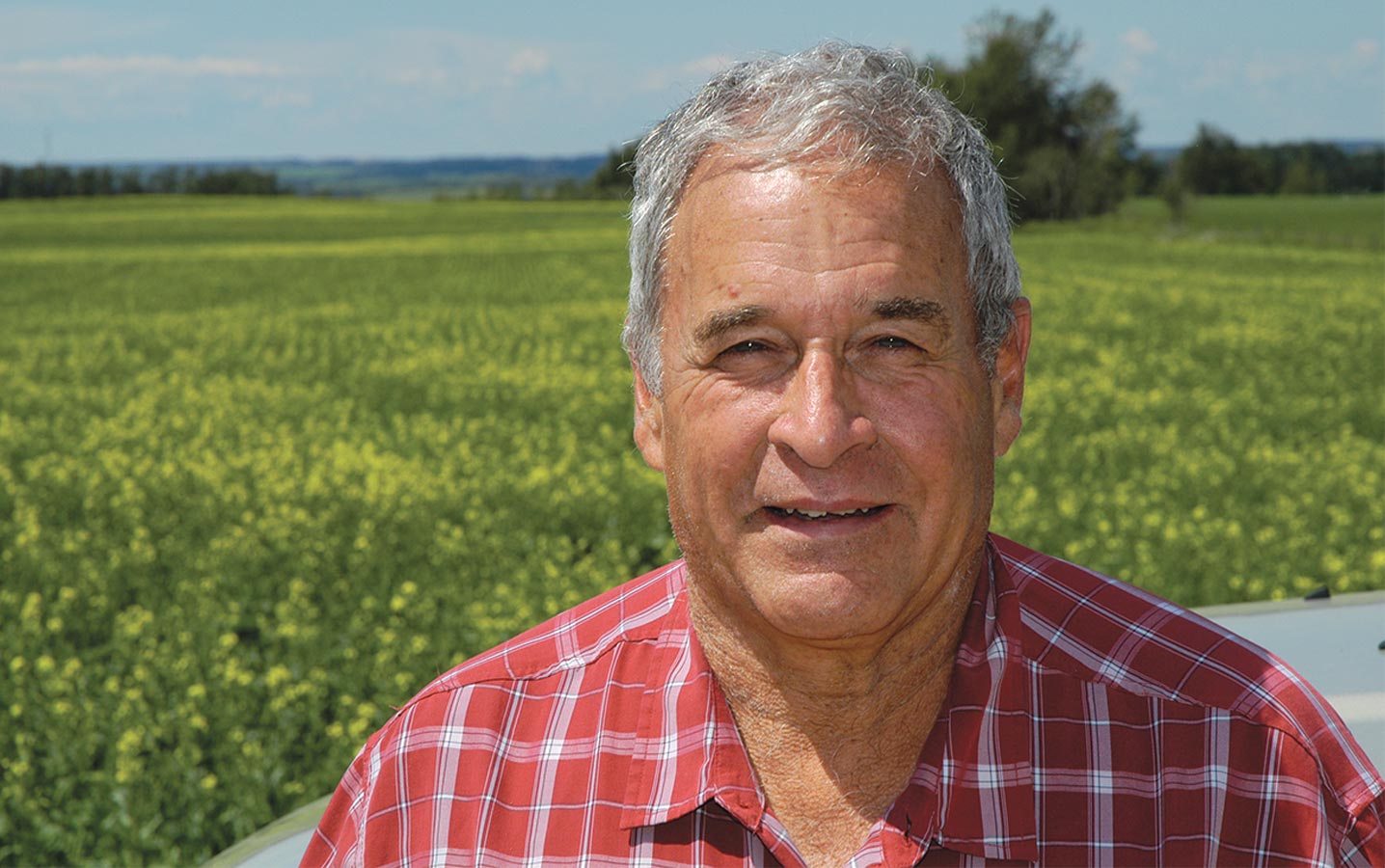Aim for consistent seed depth
You want to seed canola at up to one inch deep. What you might not realize, says Craig Shaw, is that seeding tools are rarely that precise, often varying from a quarter inch to two inches when set for one inch.
Shaw, who farms at Lacombe, Alta., wanted to see if planters could reduce that variability. He has worked with Agriculture and Agri-Food Canada (AAFC) research scientists at Lacombe on various projects, and recently co-operated with them on a planter project for canola seeding.
Shaw and AAFC with input from Murray Hartman, oilseed specialist with Alberta Agriculture and Forestry, and the Canola Council of Canada, put together a three-year project to compare results for a ConservaPak drill and a Monosem planter. Both were configured for two row spacings – 12” and 24” – and various seeding rates, including rates as low as two seeds per square foot.
The project didn’t come to any sound conclusions. “We did not get a strong data set from this experiment,” says Neil Harker, AAFC research scientist and lead on the project. Weather and equipment settings were factors. “The data are too preliminary and limited to make any solid conclusions or recommendations.”
By participating in the study, Shaw did learn a lot about planters. For one thing, they are not well-suited to a one-pass system. Planters are more likely to reach their precise seed placement potential in a tilled field, and they are not designed to carry much fertilizer. Modifications are available to make them one-pass possible, “But how much money do you want to tie up in the planter?” Shaw asks. “It is not hard to double the cost of a planter by adding features.”
Planters also have a lot more moving parts than a regular drill, which means more maintenance, he adds.
That said, if Shaw wasn’t ready to retire, he might make the switch. “A planter would work in our system,” he says. Shaw puts fertilizer down in the fall, which works the soil and also eliminates the need to carry a lot of fertilizer with the seeding tool – both of which benefit the planter option.
He says six or seven farms in his area already use planters for canola. “The huge plus,” he says, “is the ability to back off seeding rates quite a bit and still be able to maintain yields.”
But planters aren’t the only path to higher seed survival and achieving target yields at lower seeding rates. Shaw uses a Salford 522 double-disc drill with air delivery and 10-inch spacing between openers. He seeds canola at
3.5 lb./ac. To limit seed bounce, he added SeedVu vents at the top of each manifold to bleed off air pressure so seed and fertilizer just drop to the opener. This is one step that can improve consistency of seed placement with an air drill.
Others are Individual depth control on each row and improved seed metering.
Beyond that, canola seed survival depends a lot on soil temperature, soil moisture, residue conditions and many other factors that have little to do with the seeding tool.
“The bottom line is that high canola seeding rates will offset variability in the seedbed environment,” Shaw says. “When you do things right to reduce variability in the seedbed environment, you can lower seeding rates.” While a planter can help in some respects, many other factors influence the results.





